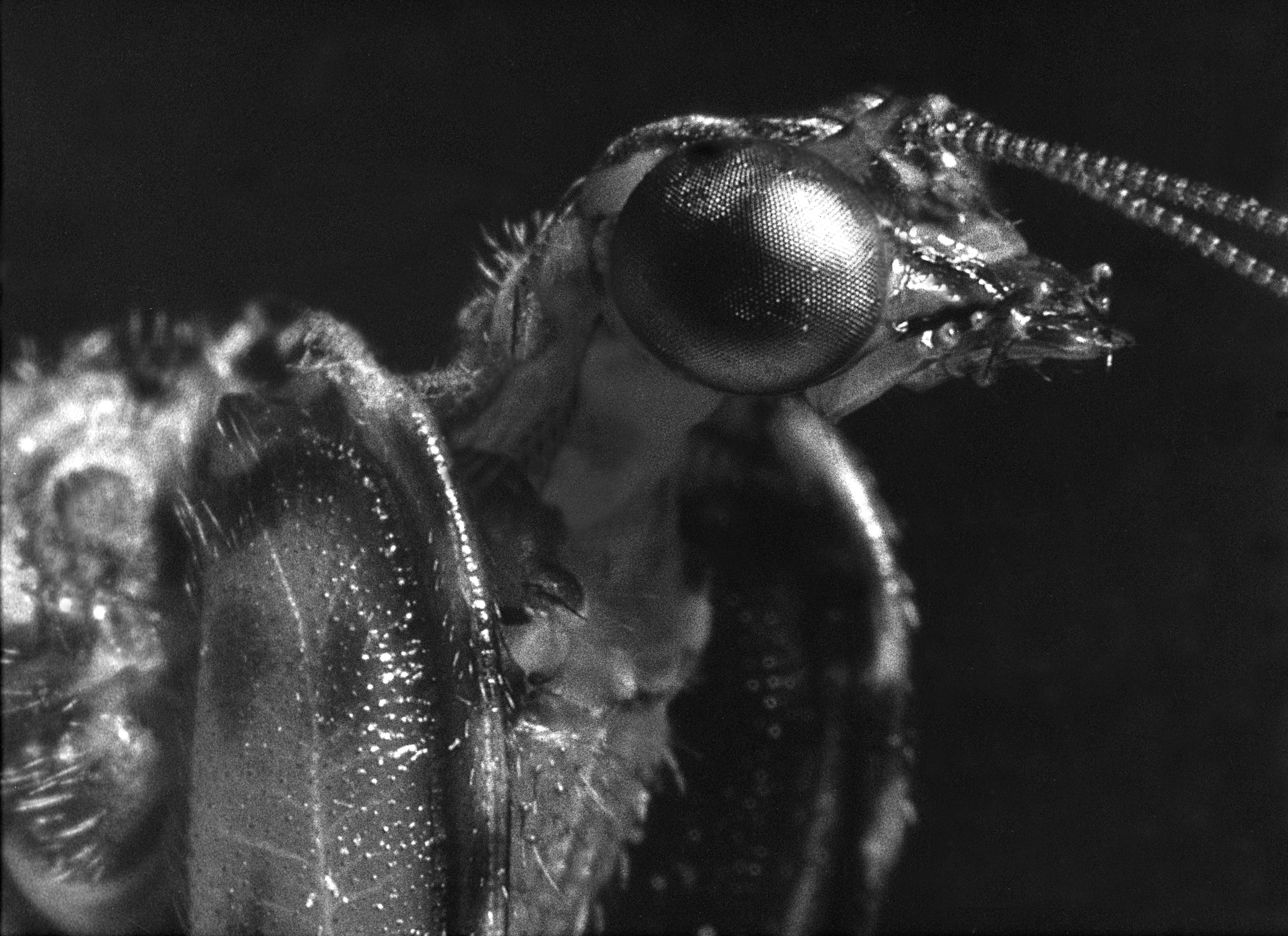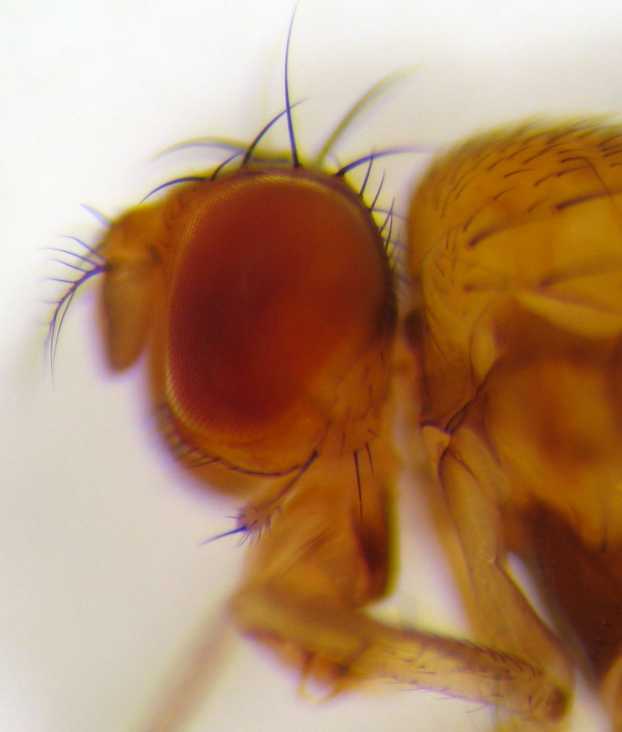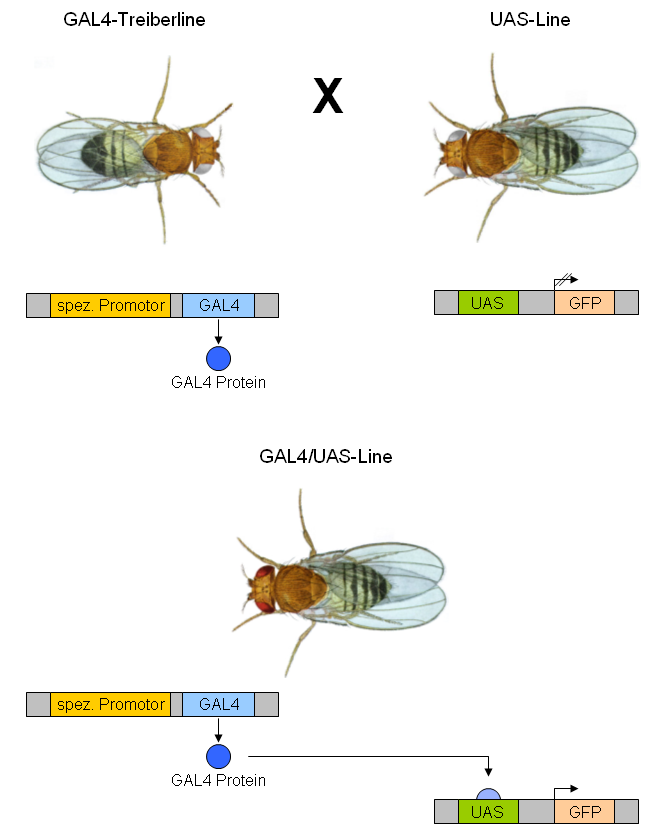|
Pseudopupil
In the compound eye of invertebrates such as insects and crustaceans, the pseudopupil appears as a dark spot which moves across the eye as the animal is rotated. This occurs because the ommatidia that one observes "head-on" (along their optical axes) absorb the incident light, while those to one side reflect it. The pseudopupil therefore reveals which ommatidia are aligned with the axis along which the observer is viewing. Pseudopupil analysis technique The pseudopupil analysis technique is used to study neurodegeneration in insects like ''Drosophila ''Drosophila'' (), from Ancient Greek δρόσος (''drósos''), meaning "dew", and φίλος (''phílos''), meaning "loving", is a genus of fly, belonging to the family Drosophilidae, whose members are often called "small fruit flies" or p ...'', where specimens are genetically engineered with transgenes to model neurodegenerative diseases such as Huntington's chorea. An adult ''Drosophila'' eye consists of nearly 8 ... [...More Info...] [...Related Items...] OR: [Wikipedia] [Google] [Baidu] |
Ommatidia
The compound eyes of arthropods like insects, crustaceans and millipedes are composed of units called ommatidia (: ommatidium). An ommatidium contains a cluster of photoreceptor cells surrounded by support cells and pigment cells. The outer part of the ommatidium is overlaid with a transparent cornea. Each ommatidium is innervated by one axon bundle (usually consisting of 6–9 axons, depending on the number of rhabdomeres) and provides the brain with one picture element. The brain forms an image from these independent picture elements. The number of ommatidia in the eye depends upon the type of arthropod and range from as low as five as in the Antarctic isopod '' Glyptonotus antarcticus'', or a handful in the primitive Zygentoma, to around 30,000 in larger Anisoptera dragonflies and some Sphingidae moths. Description Ommatidia are typically hexagonal in cross-section and approximately ten times longer than wide. The diameter is largest at the surface, tapering toward the inner ... [...More Info...] [...Related Items...] OR: [Wikipedia] [Google] [Baidu] |
Compound Eye
A compound eye is a Eye, visual organ found in arthropods such as insects and crustaceans. It may consist of thousands of ommatidium, ommatidia, which are tiny independent photoreception units that consist of a cornea, lens (anatomy), lens, and photoreceptor cells which distinguish brightness and color. The image perceived by this arthropod eye is a combination of inputs from the numerous ommatidia, which are oriented to point in slightly different directions. Compared with single-aperture eyes, compound eyes have poor image resolution; however, they possess a very large view angle and the ability to detect fast movement and, in some cases, the Polarization (waves), polarization of light. Because a compound eye is made up of a collection of ommatidia, each with its own lens, light will enter each ommatidium instead of using a single entrance point. The individual light receptors behind each lens are then turned on and off due to a series of changes in the light intensity during mov ... [...More Info...] [...Related Items...] OR: [Wikipedia] [Google] [Baidu] |
Pseudosquilla
''Pseudosquilla ciliata'', the common mantis shrimp, is a species of mantis shrimp, known by common names including rainbow mantis shrimp and false mantis shrimp. It is widespread in the tropical Indo-Pacific region and in both the western and eastern Atlantic Ocean. Description ''P. ciliata'' can be distinguished from other closely related mantis shrimps by several characteristics; the eye is cylindrical with a hemispherical cornea; the rostral plate lacks a small spine at the front; the carapace does not bear large black spots; the telson has three keel-like ridges on either side of a central ridge; and the base of each uropod terminates in two slender flattened spines, the innermost of which is the shorter. The colour of ''P. ciliata'' varies greatly depending on an individual's environment; for example, ''P. ciliata'' living in a sea grass flat will often turn green, while one living in coralline algae will often turn red. ''P. ciliata'' may reach a total length of . The colo ... [...More Info...] [...Related Items...] OR: [Wikipedia] [Google] [Baidu] |
Invertebrate
Invertebrates are animals that neither develop nor retain a vertebral column (commonly known as a ''spine'' or ''backbone''), which evolved from the notochord. It is a paraphyletic grouping including all animals excluding the chordata, chordate subphylum Vertebrata, i.e. vertebrates. Well-known Phylum, phyla of invertebrates include arthropods, molluscs, annelids, echinoderms, flatworms, cnidarians, and sponges. The majority of animal species are invertebrates; one estimate puts the figure at 97%. Many invertebrate taxon, taxa have a greater number and diversity of species than the entire subphylum of Vertebrata. Invertebrates vary widely in size, from 10 Micrometre, μm (0.0004 in) myxozoans to the 9–10 m (30–33 ft) colossal squid. Some so-called invertebrates, such as the Tunicata and Cephalochordata, are actually sister chordate subphyla to Vertebrata, being more closely related to vertebrates than to other invertebrates. This makes the "invertebrates" para ... [...More Info...] [...Related Items...] OR: [Wikipedia] [Google] [Baidu] |
Insect
Insects (from Latin ') are Hexapoda, hexapod invertebrates of the class (biology), class Insecta. They are the largest group within the arthropod phylum. Insects have a chitinous exoskeleton, a three-part body (Insect morphology#Head, head, Thorax (insect anatomy), thorax and abdomen (insect anatomy), abdomen), three pairs of jointed Arthropod leg, legs, compound eyes, and a pair of antenna (biology), antennae. Insects are the most diverse group of animals, with more than a million described species; they represent more than half of all animal species. The insect nervous system consists of a insect brain, brain and a ventral nerve cord. Most insects reproduce Oviparous, by laying eggs. Insects Respiratory system of insects, breathe air through a system of Spiracle (arthropods), paired openings along their sides, connected to Trachea#Invertebrates, small tubes that take air directly to the tissues. The blood therefore does not carry oxygen; it is only partly contained in ves ... [...More Info...] [...Related Items...] OR: [Wikipedia] [Google] [Baidu] |
Crustacean
Crustaceans (from Latin meaning: "those with shells" or "crusted ones") are invertebrate animals that constitute one group of arthropods that are traditionally a part of the subphylum Crustacea (), a large, diverse group of mainly aquatic arthropods including decapods (shrimps, prawns, crabs, lobsters and crayfish), seed shrimp, branchiopods, fish lice, krill, remipedes, isopods, barnacles, copepods, opossum shrimps, amphipods and mantis shrimp. The crustacean group can be treated as a subphylum under the clade Mandibulata. It is now well accepted that the hexapods (insects and entognathans) emerged deep in the Crustacean group, with the completed pan-group referred to as Pancrustacea. The three classes Cephalocarida, Branchiopoda and Remipedia are more closely related to the hexapods than they are to any of the other crustaceans ( oligostracans and multicrustaceans). The 67,000 described species range in size from '' Stygotantulus stocki'' at , to the Japanese ... [...More Info...] [...Related Items...] OR: [Wikipedia] [Google] [Baidu] |
Optical Axis
An optical axis is an imaginary line that passes through the geometrical center of an optical system such as a camera lens, microscope or telescopic sight. Lens elements often have rotational symmetry about the axis. The optical axis defines the path along which light propagates through the system, up to first approximation. For a system composed of simple lenses and mirrors, the axis passes through the center of curvature of each surface, and coincides with the axis of rotational symmetry. The optical axis is often coincident with the system's mechanical axis, but not always, as in the case of off-axis optical systems. For an optical fiber An optical fiber, or optical fibre, is a flexible glass or plastic fiber that can transmit light from one end to the other. Such fibers find wide usage in fiber-optic communications, where they permit transmission over longer distances and at ..., the optical axis is along the center of the fiber core, and is also known as the ''f ... [...More Info...] [...Related Items...] OR: [Wikipedia] [Google] [Baidu] |
Incident Light
In optics, a ray is an idealized geometrical model of light or other electromagnetic radiation, obtained by choosing a curve that is perpendicular to the ''wavefronts'' of the actual light, and that points in the direction of energy flow. Rays are used to model the propagation of light through an optical system, by dividing the real light field up into discrete rays that can be computationally propagated through the system by the techniques of '' ray tracing''. This allows even very complex optical systems to be analyzed mathematically or simulated by computer. Ray tracing uses approximate solutions to Maxwell's equations that are valid as long as the light waves propagate through and around objects whose dimensions are much greater than the light's wavelength. '' Ray optics'' or ''geometrical optics'' does not describe phenomena such as diffraction, which require wave optics theory. Some wave phenomena such as interference can be modeled in limited circumstances by adding ... [...More Info...] [...Related Items...] OR: [Wikipedia] [Google] [Baidu] |
The Journal Of Experimental Biology
''Journal of Experimental Biology'' (formerly ''The British Journal of Experimental Biology)'' is a peer-reviewed scientific journal in the field of comparative physiology and integrative biology. It is published by The Company of Biologists. The journal is partnered with Publons and has two-way integration with bioRxiv. ''Journal of Experimental Biology'' is now a hybrid journal and publishes 24 issues a year. Content over six months old is free to read. History ''The'' ''British Journal of Experimental Biology'' was established in Edinburgh in 1923 (''Br. J. Exp. Biol.'': ). It was published by Oliver and Boyd and edited by F. A. E. Crew with an Editorial Board of nine members, including Julian Huxley. When the journal ran into financial trouble, George Parker Bidder II, the founder of The Company of Biologists, rescued it in 1925. Sir James Gray was appointed as the journal's first Editor-in-Chief in 1925 and the journal was renamed ''The Journal of Experimental Biol ... [...More Info...] [...Related Items...] OR: [Wikipedia] [Google] [Baidu] |
Drosophila
''Drosophila'' (), from Ancient Greek δρόσος (''drósos''), meaning "dew", and φίλος (''phílos''), meaning "loving", is a genus of fly, belonging to the family Drosophilidae, whose members are often called "small fruit flies" or pomace flies, vinegar flies, or wine flies, a reference to the characteristic of many species to linger around overripe or rotting fruit. They should not be confused with the Tephritidae, a related family, which are also called fruit flies (sometimes referred to as "true fruit flies"); tephritids feed primarily on unripe or ripe fruit, with many species being regarded as destructive agricultural pests, especially the Mediterranean fruit fly. One species of ''Drosophila'' in particular, ''Drosophila melanogaster'', has been heavily used in research in genetics and is a common model organism in developmental biology. The terms "fruit fly" and "''Drosophila''" are often used synonymously with ''D. melanogaster'' in modern biological literatur ... [...More Info...] [...Related Items...] OR: [Wikipedia] [Google] [Baidu] |
GAL4/UAS System
The GAL4-UAS system is a biochemical method used to study gene expression and function in organisms such as the Drosophila melanogaster, fruit fly. It is based on the finding by Hitoshi Kakidani and Mark Ptashne, and Nicholas Webster and Pierre Chambon in 1988 that Gal4 binding to UAS sequences activates gene expression. The method was introduced into flies by Andrea Brand and Norbert Perrimon in 1993 and is considered a powerful technique for studying the Gene expression, expression of genes. The system has two parts: the Gal4 transcription factor, Gal4 gene, encoding the Saccharomyces cerevisiae, yeast transcription activator protein Gal4 transcription factor, Gal4, and the UAS (Upstream Activation Sequence), an enhancer to which GAL4 specifically binds to activate gene transcription (genetics), transcription. Overview The Gal4 transcription factor, Gal4 system allows separation of the problems of defining which cells express a gene or protein and what the experimenter wants to ... [...More Info...] [...Related Items...] OR: [Wikipedia] [Google] [Baidu] |





